Table of Contents
Economics: Fiction
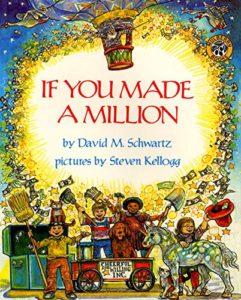 |
David M. Schwarz’s If You Made a Million (HarperCollins, 1994) – with the help of Marvelosissimo the Mathematical Magician, takes readers from one penny (earned by feeding the fish) to a million dollars, explaining on the way the nature of money, earning, investing, dividends, and interest. A delightful read for ages 5-9. |
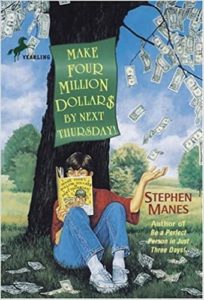 |
In Stephen Manes’s Make Four Million Dollars by Next Thursday! (Cadwallader & Stern, 2020), Jason Nozzle finds a book of that title in the park (by Dr. K. Pinkerton Silverfish) and tries to follow the instructions. For ages 8-12. |
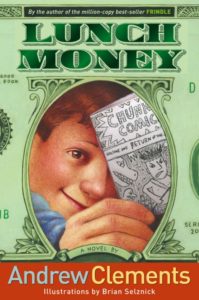 |
In Andrew Clements’s economics-themed Lunch Money (Simon & Schuster, 2005), budding tycoon Greg has been earning money since he was in preschool – he even maintains his own bank (the First Family Bank of Greg) from which he lends money to his brothers (with interest). Then in sixth grade he starts a business selling homemade comic books – and runs up against rival Maura who is doing the same. Their conflict leads the principal to ban comics from the school. Greg and Maura then join together to combat the system. For ages 9-12. |
 |
Robert McCloskey’s hilarious Homer Price (Puffin, 2005) includes the story of Homer and the runaway doughnut machine, a tongue-in-cheek lesson on the law of supply and demand. For ages 8-12. |
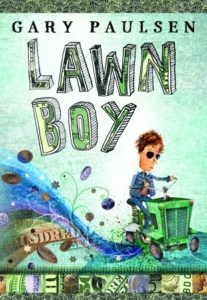 |
In Gary Paulsen’s Lawn Boy (Yearling, 2009), the 12-year-old protagonist is given an old lawn mower and sets out to earn money mowing lawns. One of his clients is day-trader Arnold, who offers to teach him the ins and outs of capitalism while bartering his lawn money into a fortune – which turns out to have unforeseen complications. For ages 8-12. |
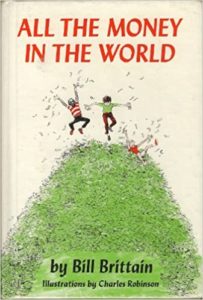 |
Bill Brittain’s All the Money in the World (HarperCollins, 1992) is well worth tracking down. Quentin nabs a leprechaun and wishes for all the money in the world – which turns out to have a lot of unexpected repercussions. For ages 9-12. |
Economics: Nonfiction
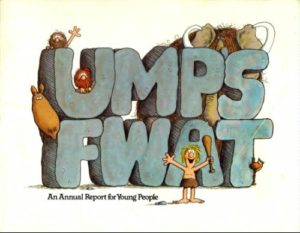 |
From the Powell Economic Education Foundation, Ump’s Fwat – available in book and video forms – is a clever and funny picture-book explanation of economic principles, based on caveperson Ump who has invented a particularly effective fwat. For ages 5-9. |
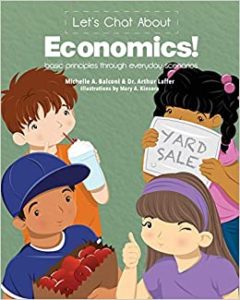 |
By Michelle A. Balconi and Arthur Laffer, Let’s Chat About Economics! (Gichigami Press, 2014) explains basic economic principals – scarcity, supply and demand, opportunity costs and diminishing returns – through familiar scenarios such as grocery shopping, a family vacation, and a yard sale. For ages 6-12. |
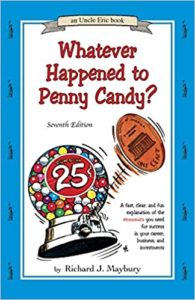 |
Richard J. Maybury’s Whatever Happened to Penny Candy? (Bluestocking Press, 2016), written as a series of letters from knowledgeable Uncle Eric to a young niece or nephew (Chris), is an excellent explanation of money and economic theory for ages 9 and up. Highly recommended. |
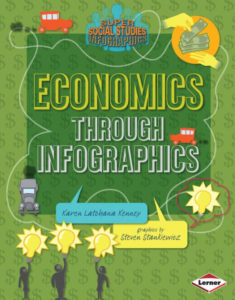 |
A picture often really is worth a thousand words. Karen Latchana Kenney’s Economics Through Infographics (Lerner, 2014) uses creative and colorful graphics to explain the history of trade, types of world economies, money exchange, supply and demand, exports and imports, and more. For ages 9-12. |
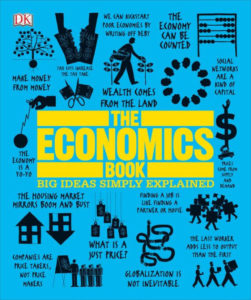 |
The Economics Book: Big Ideas Simply Explained (DK, 2018) uses creative design and catchy illustrations and graphics to cover the history and science of economics. Chapters include “Let the Trading Begin,” “Industrial and Economic Revolutions,” “War and Depressions,” “Contemporary Economics,” and more. For teens and adults. |
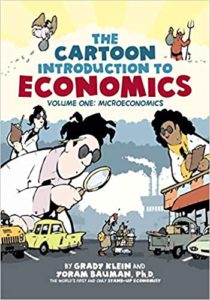 |
By Yoram Bauman and Grady Klein, The Cartoon Introduction to Economics (Volume I: Microeconomics and Volume II: Macroeconomics) (Hill and Wang, 2010) covers the history, theory, and trends of economics with catchy cartoon illustrations and a sense of humor. For teens and adults. |
 |
Building Toothpick Bridges (Dale Seymour, 1999) is an economics project targeted at grades 5-8, in which small groups of kids build a bridge while holding to a budget. Link this one to bridge engineering and studies of famous bridges worldwide. |
|
See Architecture for more resources – including many involving bridges. |
|
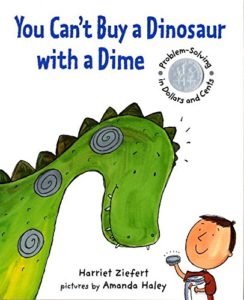 |
Kiddynomics is a five-lesson interactive economic curriculum for ages 3-5, incorporating read-alouds, reading readiness skills, counting, songs, and art. Each lesson is about 45 minutes long. Titles include “Betty Bunny Wants Everything,” “Just Saving My Money,” and “You Can’t Buy a Dinosaur with a Dime.”
|
|
Teaching Economics with Children’s Literature includes a book list and suggestions for teaching elementary-level kids the basis of economics: goods and services, consumers and producers, capital and entrepreneurship. |
|
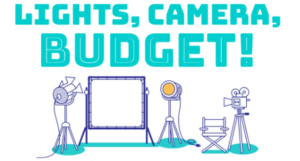 |
From PBS Learning Media, see this series of videos and interactive lessons on economics, categorized by grade. Included are Lights, Camera, Budget!: A Personal Finance Game (grades 6-12) and Rags to Riches, in which participants launch and run an online T-shirt business (grades 7-12). |
|
From Social Studies for Kids, Economics includes a list of short reader-friendly essays on such topics as Making a Budget, The Importance of Trade, How the Internet Has Changed Economics, The Economics of the Lemonade Stand, and more. |
|
|
From Rider University, Economics for Kids has long lists of interactive online games, activities, and quizzes on business and entrepreneurship, money management, and personal finance for a range of ages. |
|
|
From Econedlink, see lessons, resources, and videos categorized by grade level (K-2, 3-5, 6-8, 9-12). |
|
|
From the National Assessment of Educational Progress, see the economics assessment measurements for grade 12 in three main content areas: the market, national, and international economies. |
|
 |
Check out the Great Courses for multi-lesson classes on a range of economic topics, generally appropriate for ages 13 and up. Sample titles include Game Theory, Economic History of the World, Globalism vs. Nationalism, and Capitalism vs. Socialism. Most consist of about 25 half-hour lectures. (Note: all Great Courses offerings periodically go on sale at significantly reduced prices.) |
